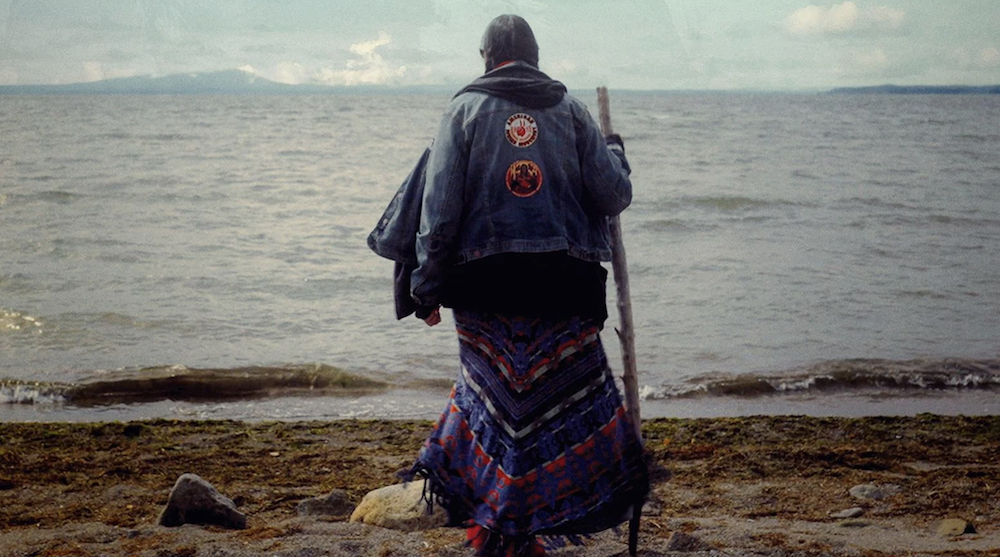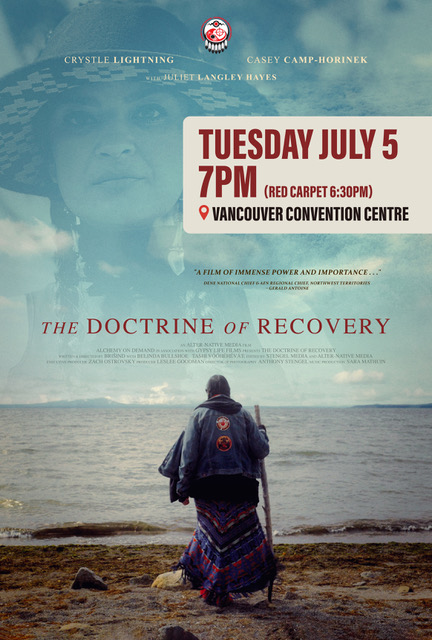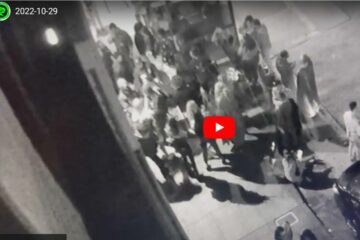The 47th American Indian Film Festival is Coming to San Francisco
Reservation Dogs obviously does not present the only visual story that can be told about Native American life. But the trick for interested viewers is finding those cinematic stories. Fortunately for those readers living in the San Francisco Bay Area, the American Indian Film Festival (hereafter “AIFF”) is back to provide such stories.
The 47th AIFF will run from November 4-12, 2022. Its film schedule consists of 17 different film and video programs on subjects ranging from Indigenous displacement to inter-tribal alliance building. Shorts and feature films are mixed together in genres ranging from straight documentary to animated narrative. The primary venue will be the Koret Auditorium, located at the San Francisco Main Library (100 Larkin Street, SF). Additional screenings will take place at the Letterman Digital Arts Center (I Letterman Drive #B, SF) and the Southside Theater (2 Marina Blvd., SF). Broke-Ass hint: All the Koret Auditorium screenings are free.
Here’s a sampling of what you can expect to see at this year’s AIFF:
The Doctrine Of Recovery–If you’re not a Native American, you’ve probably never heard of “the Doctrine of Discovery,” but you might be familiar with its effects. Formulated by Pope Alexander VI and proclaimed via the Papal Bull Of 1493, this doctrine greenlit European conquest of both the lands occupied by Native Americans and the souls of those invaded peoples. And if you thought this proclamation was something forgotten by antiquity, know that when the Pope recently visited Canada in August 2022, he refused to rescind this doctrine. So in other words, stealing Indigenous peoples’ land is still lawl
DUES–Before Bobbie Willson co-created “Reservation Dogs,” this Sisseton-Wahpeton Dakota helped found the 1491s Indian Sketch Comedy Group. But he’s also a graffiti street artist known as DUES, and this short documentary follows him during his one-month artist Residency in Santa Fe, New Mexico.
Indianland–Back in 1969, a group of Native American student activists crossed San Francisco Bay to occupy the abandoned Alcatraz Federal Penitentiary in the name of “Indians of All Tribes.” The occupation wound up lasting 19 months. Now, 50 years later, survivors of that event meet again on The Rock to share their stories and memories of the occupation and to reflect on the fate of Native American rights today.
Kanatenhs–When The Pine Needles Fall–In 1990, the Kanehsatake Mohawks took a dim view of plans to expand a 9-hole golf course on what was supposed to be the last bit of their Homelands’ common land. So they erected a barricade to stop the expansion. The Mohawk women prepared to confront the cops and commit acts of civil disobedience. What they and the other protesters didn’t expect was for the cops to suddenly open fire on them. That shooting led to what came to be known as the Mohawk Crisis, which involved a 78-day siege by the cops. This documentary follows what happened on the siege’s critical first day. .
Magic Hits Featuring Adrian Sutherland–Since March 2020, singer Adrian Sutherland has lived isolated in Canada’s remote North. But that didn’t stop him from collaborating remotely on this music video with artists located in Attawapiskat, ON, Toronto ON, and Nashville TN. The musicians in each of those locales were shot individually. Then, thanks to the magic of computer editing and clever use of split screen, a music video was born.
Meneath: The Hidden Island Of Ethics–This stop-motion animated short uses the character of a precocious Metis baby girl to show the contrast between the Seven Deadly Sins and the Seven Sacred Teachings. Baby Girl’s absorption of teachings on the Seven Deadly Sins may make her think she’s going to Hell. But learning the Anishinaabe Teachings gives her strength and pride…and even a path to healing.
My Indian Name–What happens to Indigenous peoples when their traditional names are stripped away from them? As this documentary shows, such people are left emotionally adrift trying to figure out where they fit into this world. Fortunately, there are steps being taken today to allow Indigenous peoples to reclaim their right to use their true names.
Native To Right Here: The Plants, Animals, And People Of Tuushtak–Vincent Medina and Louis Trevino, founders of Cafe Ohlone, give viewers a tour of the flora and fauna to be seen in the hills below the most sacred peak known as Tuushtak Better known to non-Ohlone as Mt. Diablo, the peak and the tour below it is also a chance for the film’s guides to discuss Ohlone history, culture, and cuisine. How can we all celebrate the things that are “native to right here?” .
No More Pipeline Blues (On This Land Where We Belong)–Why are Indigenous mothers, grandmothers, and others pushing back against the pipeline known as Line 3? Because it cuts through the heart of Native lands and crosses more than 200 bodies of water, some of which are drinking water sources for millions of people. And should Line 3 break and spill its polluting tar sands oil in the wrong spot, the results can be disastrous for the people dependent on clean water. This song from activist Larry Long explains these concerns.
The Redeemer–You’ve seen this Western’s set-up before: two women kidnapped by a gang of violent outlaws, and the heroic male with his son heads into the frontier to rescue the womenfolk. The big difference here is that the alleged male rescuer gets continually sidetracked by the Wild West’s dangers and his own tarnished past. So the kidnapped young pregnant homesteader and her Native American mother-in-law must find their own means of saving themselves from their abductors.
Unlord The Land–In this short scripted by Tommy Orange (“There There”) and produced by Rosario Dawson, a struggle erupts between a Native American artist and his brother, a rich real estate agent. At the center of the struggle: a family-owned apartment building in rapidly gentrifying Oakland being flipped for profit.
Wabanavia–Filmmaker Jason Keith Brown made this animated short film on an iPhone using miniature sets and having 95% of its special effects rendered in camera. The film explores Brown’s ancestry, both as a member of Maine’s Penobscot Nation and as a descendant of Swedes. Traditional Wabanaki welcome songs are blended with Scandinavian musical notes to help look at the similarities among the lores of Wabanaki, Sapmi, and Viking.
If you walk away from these and other AIFF screenings having a better appreciation of Native American cultures or at least a desire to see more authentic media representations of Native Americans, then AIFF has done its job.











